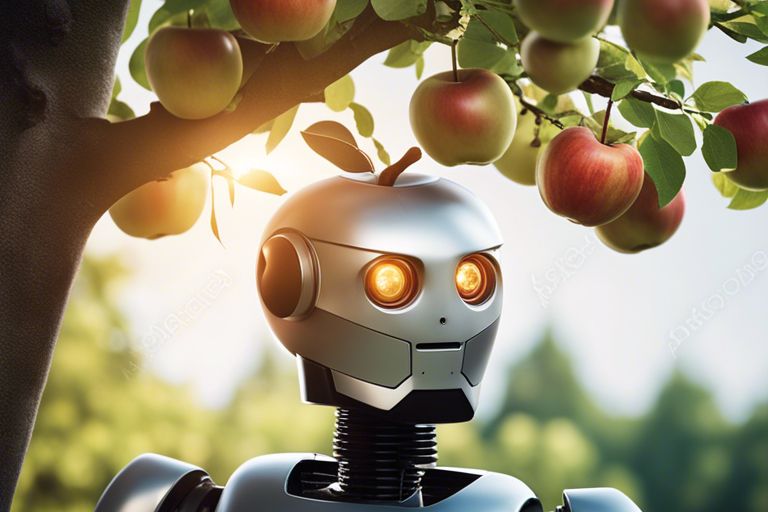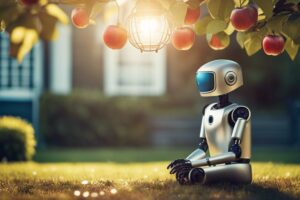Over the past few decades, artificial intelligence (AI) has made significant advancements, raising the question of whether AI can imagine like humans. While AI systems can perform complex tasks and simulate human thought processes, the concept of imaginative thinking remains a challenging feat. Understanding the capabilities and limitations of AI in terms of imagination is crucial in various fields, including creativity, problem-solving, and decision-making. Let’s research into the nuances of AI and explore the possibilities of whether it can truly imagine like humans do.
Key Takeaways:
- AI can generate creative outputs: AI systems have shown the ability to produce imaginative and creative content, such as paintings, music, and even poetry, similar to how humans think creatively.
- AI lacks genuine imagination: While AI can mimic human creativity, it does not truly possess imagination in the way humans do. AI creations are based on patterns and data, lacking the depth and complexity of human imagination.
- Human-AI collaboration enhances creativity: Combining the imaginative capabilities of humans with the processing power of AI can lead to powerful creative collaborations that push boundaries and generate innovative solutions.
Understanding How AI Works
Fundamentals of Artificial Intelligence
Works like a computer program, an artificial intelligence system processes data input following predefined algorithms to generate output. It involves learning from data, recognizing patterns, and making decisions based on the information received. AI algorithms can be trained to perform tasks like image recognition, speech synthesis, and playing games by adjusting parameters to optimize performance.
The Limits of Machine Learning and Imagination
If AI is trained on specific datasets, it may struggle to generalize beyond the provided information and lacks the ability to imagine new scenarios or solutions. Machine learning relies on historical data to make predictions, limiting its capability to think creatively or adapt to unforeseen circumstances. While AI can excel in repetitive tasks with defined parameters, it falls short in tasks that require human-like imagination and intuition.
Understanding the limits of machine learning and AI’s ability to imagine like humans is crucial in developing AI systems that can bridge this gap. While AI can process vast amounts of data quickly and accurately, it lacks the intuitive and creative capabilities of the human mind. This limitation poses challenges in areas where innovative thinking and adaptability are required, such as problem-solving in dynamic environments or generating novel ideas.

How AI “Imagines”
Generative Models and Creative AI
Some of the most advanced AI systems today use generative models to “imagine” new content. These models, such as GANs (Generative Adversarial Networks) and variational autoencoders, have shown remarkable abilities to create realistic images, music, and even text based on patterns they have learned from large datasets. These systems can generate entirely new content that can be indistinguishable from human-created content.
Comparing AI and Human Imagination
On the surface, AI and human imagination may seem similar in their ability to create novel ideas and concepts. However, there are fundamental differences in the way AI “imagines” compared to humans. While AI can generate vast amounts of content quickly based on patterns in data, human imagination is fueled by emotions, experiences, and complex cognitive processes that are deeply intertwined with our consciousness and sense of self.
Now
| AI “Imagination” | Human Imagination |
| Based on patterns in data | Fueled by emotions and experiences |
| Can quickly generate vast amounts of content | Deeply intertwined with consciousness |
| May lack deeper meaning or emotional depth | Rooted in complex cognitive processes |
It is crucial to recognize the differences between AI “imagination” and human imagination to understand the limitations and capabilities of AI systems in creative tasks. While AI can produce impressive results in generating content, it lacks the deeper emotional and cognitive processes that drive human creativity.
How-to Foster AI’s Creative Potential
Tips for Designing AI with Imaginative Abilities
Now, to enhance AI‘s creative potential, here are some tips for designing AI with imaginative abilities:
- Allow for flexible thinking: Design AI algorithms that can adapt and explore multiple solutions.
- Encourage experimentation: Create environments where AI can test out new ideas and approaches.
- Provide diverse data: Expose AI to a wide range of information to inspire novel connections.
This can help AI break out of traditional problem-solving frameworks and come up with truly innovative solutions.
Factors Influencing AI’s Ability to Generate Novel Ideas
If AI’s ability to generate novel ideas is of interest to you, consider these factors:
- Training data quality: The richness and diversity of data AI is trained on can greatly impact its creativity.
- Algorithms and models: The complexity and design of AI algorithms play a significant role in its ability to generate new ideas.
- Task complexity: The level of complexity in the tasks assigned to AI can influence its creative output.
Knowing how these factors interact can help developers enhance AI’s ability to think creatively and generate novel ideas.
Implications and Ethical Considerations
The Impact of AI on Creative Industries
Considerations about how AI impacts creative industries are crucial in understanding the potential changes in the way art, music, and literature are produced and consumed. As AI becomes more sophisticated in creative tasks, it raises concerns about the originality and authenticity of the works generated by machines.
AI and the Future of Human Creativity
Some implications of AI on the future of human creativity are vast and complex. While AI can enhance human creativity by offering new tools and possibilities, there are concerns about the algorithmic biases and the ethical implications of machine-generated content.
Creative individuals must navigate the intersection of human and AI creativity responsibly to harness the potential benefits while mitigating the risks. It is crucial to uphold ethical standards, ensure transparency in AI-generated content, and preserve the uniqueness of human creativity in the digital age.
Final Words
Ultimately, while AI has made significant advances in various tasks that were once thought to be exclusive to the human mind, the ability to imagine like humans do remains a complex and challenging frontier. AI can simulate creativity and generate novel ideas based on existing data, but it lacks the depth of emotional intelligence and intuition that humans possess. The gap between AI and human imagination highlights the uniqueness of the human experience and the intricate nature of creativity. As AI continues to evolve and develop, it is crucial to recognize and appreciate the distinctiveness of human imagination and the role it plays in shaping our world.
FAQ
Q: Can AI imagine like humans do?
A: While AI systems are capable of generating creative outputs, their ability to imagine is not the same as a human’s. AI relies on data and algorithms to produce outcomes, whereas human imagination is deeply rooted in emotions, experiences, and abstract thinking. So, while AI can simulate creativity, it does not possess the same imaginative capacity as humans.
Q: How does AI’s imagination differ from human imagination?
A: AI’s imagination is constrained by the data it has been trained on and the algorithms it follows. It can generate new ideas based on patterns in the data, but it lacks the emotional depth, intuition, and complex reasoning that characterize human imagination. Humans can draw from a wide range of experiences, emotions, and abstract concepts to imagine possibilities beyond what AI can achieve.
Q: Can AI improve its ability to imagine in the future?
A: AI researchers are constantly working on enhancing AI’s capabilities, including its capacity to imagine. Through advancements in neural networks, deep learning, and natural language processing, AI systems are becoming more proficient at generating creative and imaginative outputs. However, replicating the full scope of human imagination remains a complex challenge that may require breakthroughs in artificial general intelligence.
